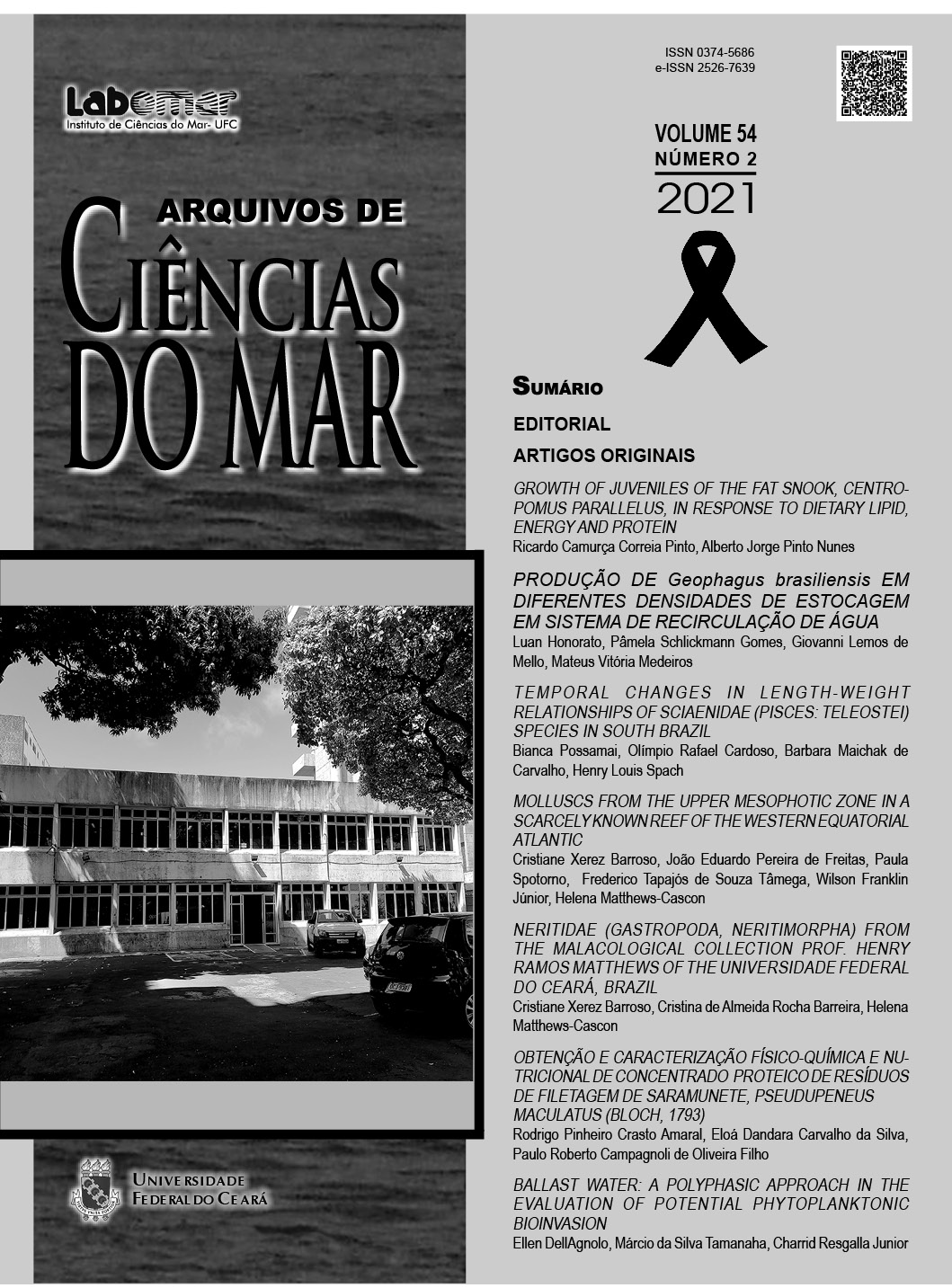BALLAST WATER: A POLYPHASIC APPROACH IN THE EVALUATION OF POTENTIAL PHYTOPLANKTONIC BIOINVASION
Água de lastro: uma abordagem polifásica na avaliação da bioinvasão potencial fitoplancônica
DOI:
https://doi.org/10.32360/acmar.v54i2.42636Abstract
The main transport vector for exotic-invasive species around the world is ballast water in merchant ships, crossing natural biogeographic barriers. This is one of the main factors responsible for the reduction and homogenization of the global biota. As phytoplankton is the main group transported by these vessels, this study assesses the risk of bioinvasion in the port complex of Itajaí and Navegantes (southern Brazil), using a polyphasic approach, mixing classical taxonomy with molecular biology. Ballast water collections were carried out to analyze the traditional taxonomy and for clonal cultivation in the laboratory. A successful cultivation of 12 local strains and 10-ballast water was successful. In the latter case, some fresh water, contrary to the statement by the commanders of the exchange of water in the deep ocean (> 200 m). Molecular identification was performed by sequencing the complete ITS region, confirming the presence of Thalassiosira minuscula Krasske, 1941, harmful and of public health interest, previously not mentioned for the region. The species Pleurosigma W. Smith, 1852; Asterionellopsis glacialis (Castracane) Round, 1990; Trieres mobiliensis (Bailey) Ashworth and E.C. Theriot, 2013; Thalassiosira minima Gaarder, 1951; Skeletonema pseudocostatum Medlin, 1991; Pectinodesmus holtmannii E. Hegewald, C. Bock and Krienitz, 2013; Neodesmus Hindák, 1976; and Pseudopediastrum boryanum (Turpin) E. Hegewald, 2005, were identified. The results indicate the possibility of growth of the species found in the ballast environment, which may negatively alter the disposal environment.
Keywords: exotic species, molecular identification, marine phytoplankton, port complex
of Itajaí and Navegantes.
Downloads
Published
Issue
Section
License
1. Proposta de Política para Periódicos de Acesso Livre
Autores que publicam nesta revista concordam com os seguintes termos:
- Autores mantém os direitos autorais e concedem à revista o direito de primeira publicação, com o trabalho simultaneamente licenciado sob a Licença Creative Commons Attribution que permite o compartilhamento do trabalho com reconhecimento da autoria e publicação inicial nesta revista.
- Autores têm autorização para assumir contratos adicionais separadamente, para distribuição não-exclusiva da versão do trabalho publicada nesta revista (ex.: publicar em repositório institucional ou como capítulo de livro), com reconhecimento de autoria e publicação inicial nesta revista.
- Autores têm permissão e são estimulados a publicar e distribuir seu trabalho online (ex.: em repositórios institucionais ou na sua página pessoal) a qualquer ponto antes ou durante o processo editorial, já que isso pode gerar alterações produtivas, bem como aumentar o impacto e a citação do trabalho publicado (Veja O Efeito do Acesso Livre).

